Environmental Waves – Algae Bloom Elimination in Fervença River
Development Area: Water / Operational Equipment
During the warmer months there have been more frequent algae blooms in rivers, lakes, ponds, canals, reservoirs and dams.
Whenever an algae bloom occurs, we also see varying degrees of cyanobacteria concentration. Several different species of cyanobacteria exist, some extremely toxic and others non-toxic.
Harmful Algal Blooms (HAB) of toxic cyanobacteria have a negative and immediate impact on water quality and compromise its safety, due to the release of toxins (hepatotoxins, neurotoxins and dermatoxins) into the water that are dangerous for both people and animals, leading to health problems in people and even to the death of small and medium sized animals. Harmful blooms can thus lead to the immediate closure and prohibited access of recreational areas (river beaches, urban parks, etc.), and may lead to an increase in the costs of treatment of this water for consumption or even the prohibition of its use.
Several solutions exist on the market for the removal of algae bloom:
– mechanical removal that can lead to the release of large amounts of toxins;
– addition of chemicals, some of them harmful to the environment. This solution also leads to the release of a large amount of toxins into the environment.
With these solutions, mechanical removal or the addition of chemicals, there is no growth inhibition for the new algae bloom, so they will appear again.
Environmental Waves offers an environmentally friendly technology that achieves up to 90% reduction in existing algae bloom and inhibits the growth of new ones.
Here are two sets of pictures, one from May 2017 before the application of ultrasound, and the others from end August 2017.
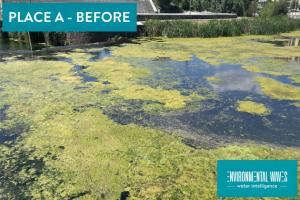
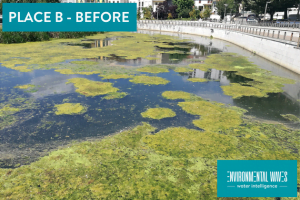
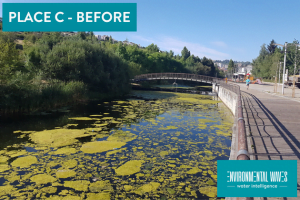
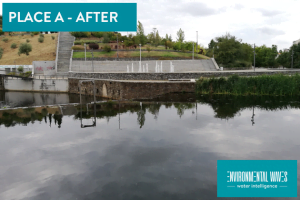
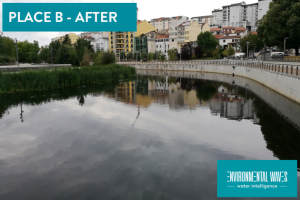
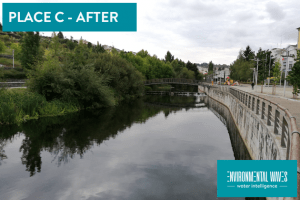
The equipment is easy to install and operate, with insignificant electrical consumption.
Advantages:
- Adaptability, since it can be placed anywhere on the banks of a river or lake;
- Very low maintenance;
- Very low operational costs;
Ultrasound can be applied in:
- Reservoirs;
- Lakes;
- Golf courses;
- Rivers;
- Dams;
- Irrigation canals;


